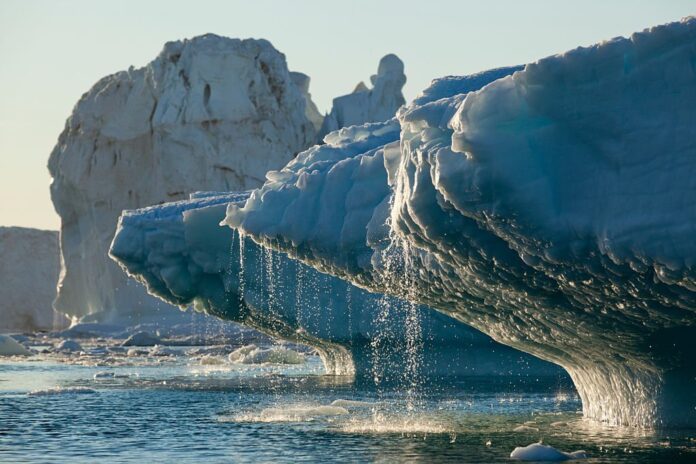PESHAWAR: Besides being home to the world 2nd highest mountain K2, Pakistan was a unique country where over 7,253 glaciers were providing fresh water supplies to millions of people for irrigation, drinking and industrial purposes.
Mostly located in Himalaya, Hindukash and Karkuram regions of Gilgit Baltistan and Khyber Pakhtunkhwa, these glaciers were a distinctive source of freshwater for agriculture, irrigation, drinking and industrial supplies to people, agriculturists, farmers and industrialists living in those regions and downstream of Pakistan.
Besides 2,253 mighty, medium and small glaciers, including Baltoro (63km), Biafo (67km), Batura (57km) found in Gilgit Baltistan, the Khyber Pakthunkhwa’s Upper Chitral district was blessed with around 500 glaciers especially at Trichmir mountains ranges providing freshwater to downward districts of Khyber Pakthunkhwa, Punjab and Sindh provinces through rivers Swat, Panjokra, Kabul and Indus throughout the year.
“Pakistan contains more glaciers than any other parts of earth outside of the polar region. Our irrigation network has largely depended on these glaciers that continuously re-charge our irrigated system in all provinces,’ said Tauheedul Haq, former Conservator of Forests KP while talking to APP on Friday.
Due to rapid population growth, he said Pakistan was heading towards a situation of water shortage and by corollary, a threat of food insecurity due to fast melting of glaciers owing to climate change and global warming issues.
The National Water Policy 2018 has revealed that per capita surface water availability has declined from 5,260 cubic meters per year in 1951 to around 1,000 cubic meters in 2016 and this quantity was likely to further drop to about 860 cubic meters by 2025, marking our transition from a “water stressed” to a “water scarce” country.
According to the policy, the minimum water requirement to avoid food and health implications of water scarcity was 1,000 cubic meters per capita per year and the situation underlined the need for rapid development and management of the country’s water resources especially completion of construction of dams of Mohmand and Diamir Bhasha on a war footing basis to conserve the precious commodities for future generation.
Tauheed said the changing and unpredictable precipitation patterns may cause serious consequences, including flash floods in the north of Pakistan as we have seen last year’s flooding and increasingly prolonged droughts in the southern parts of the country.
With glaciers retreat, he said more glacial lakes would form like that of Atabad lake in Gilgit Baltistan besides increasing the risk of Glacial Lake Outburst Floods (GLOF). “The weather conditions have changed as hot weather was being witnessed even in March and April that was not so decades before in Khyber Pakthunkhwa due to lack of rains and snowfalls,” he said.
Besides construction of new dams, he said there was a need to focus on plantation to increase chances of rains and snowfalls. “Pakistan’s average annual rainfall was ranging between 400milimeter (mm) to 1000mm while snowfall ranged about 60 inch that could be increased by bring more areas under forestry cover especially in high alpasture and glaciers zones.”
He said that the early start of summer season and subsequently heat waves lead to fast melting of glaciers, resulting in flooding and waste of fresh water. Tauheed said forestry cover in the country was around five percent, which was low compared to 25percent international standard and bringing mountainous areas under afforestration through farm forestry and enclosures would help minimize melting of glaciers in northern Pakistan.
KP Forest Department’s spokesman told APP on Friday that trees afforestration in glaciers zones was being started through enclosures and farms forestry techniques to slow glaciers melting during summer.
He said 78.93 million saplings would be planted with help of government departments, NGOs, farmers, general public and forest enclosures in Khyber Pakthunkhwa during spring season. At least 27.460 million saplings would be sown in Kohat, Peshawar, Hangu, Bannu, DI Khan, Karak, Tank and Lakki Marwat, 30.190 million in Haripur, Abbottabad, Manshera, Batagram, Kohistan and 21.28 million in Swat, Malakanad, Dir Upper, Dir Lower, Chitral, Shangla and Buner districts.
Besides 77,569,444 forest plants, he said 783,693 ornamental and native species would be distributed among people. As many as 56.277 million plants would be sown through farm forestry and 42.402 million seedlings through farmers besides provision of 2.117 million plants to Gilgit Baltistan.






















